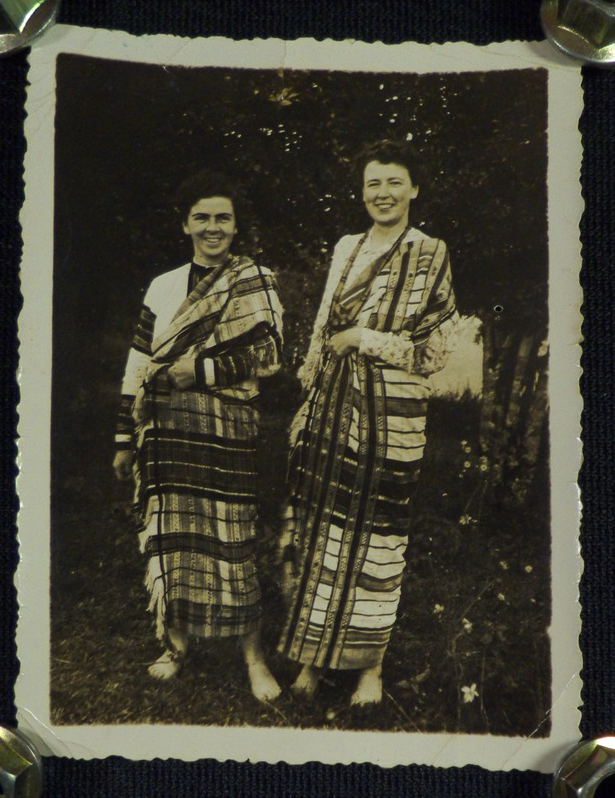“Entire books on the history of the subcontinent have been written with scant sentences reserved for the ‘tribals’ populating India’s seven North Eastern states,” writes Kyle Jackson, project co-applicant, in his description of the project. “Until now, historians have generally produced ‘armchair histories’ of Mizoram, contentedly pulling their material from earlier works by British colonial political officers.”
Many of the documents belonged to descendants of the earliest converts to Christianity in Mizoram. The Welsh were among the first missionaries to arrive in Mizoram towards the end of the 19th century. Methodists, Baptists and others soon followed.
Jackson points out that most of Mizoram converted from tribal religions to Christianity between 1901 and 1960. While the missionaries took several photographs documenting their own work, they also recorded the lives of the people they worked with and the rapid changes in Mizoram society.

RD Leta, wife Ngurtaiveli, their children, and relatives [16 Feb 1919]. The picture evidences a striking difference in dress between the Westernised garb of the man and boy, and the traditional clothing of the women.

M Suaka, chief of Durtlang [undated]. This picture shows M Suaka, one of the most important early chiefs and early converts to Christianity in Aijal, posing in front of a colonial-style bungalow, possibly his own.

Tom Moyes, Royal Air Force, Lushai Hills, with five-year-old Pi Lalengliani, sitting on his lap [18 Jul 1943].

Farewell to ARH MacDonald, ICS, Lushai Hills, at the Deputy Commisoner Bangla in Aizawl [1945]. The Deputy Commissioner Bangla has been converted into Aizawl's Raj Bhavan and its attendant compound, home today of the Governor of Mizoram.
Others were reluctant to share their images with the team because of copyright concerns. Pi Thanbuangi is the current owner of a collection of photographs by Dr Zokhuma, an early Christian convert. She now wants to publish these photographs and memoirs when possible, but allowed the team to scan these.

Chongphira and T Luaia with bicycles [undated]. This picture shows Dr Zokhuma's father (T Luaia, son of M Suaka) with his friend. The reverse of the photo notes that it was a New Year's present. The picture is unique in that bicycles were never commonly used in the extremely hilly region of Lushai Hills. This photo was probably taken somewhere outside of Lushai Hills, perhaps in Shillong, Calcutta, or Guwahati, where T Luaia pursued his education
Apart from private collections, the team also managed to obtain records from missionaries themselves. This collection, gathered by the Baptist Missionary Society at Serkawm, tended to focus more on Mizos than on group photos of the missionaries and their work. These are among the earliest photographs gathered by the team, spanning from 1914 to 1940.

Miss Parker of WM Durtlang and Miss Roberts of Aijal [undated]. Zosap (missionaries) of the Welsh mission to North Lushai Hills wearing the most traditional Mizo puan or dress. This is a unique picture in portraying a cross-cultural interaction between local traditions and Christian missionaries from abroad.
Correction: This article was edited to reflect that Kyle Jackson, not Joseph Lalzarliana, is the author of the sections quoted above.










